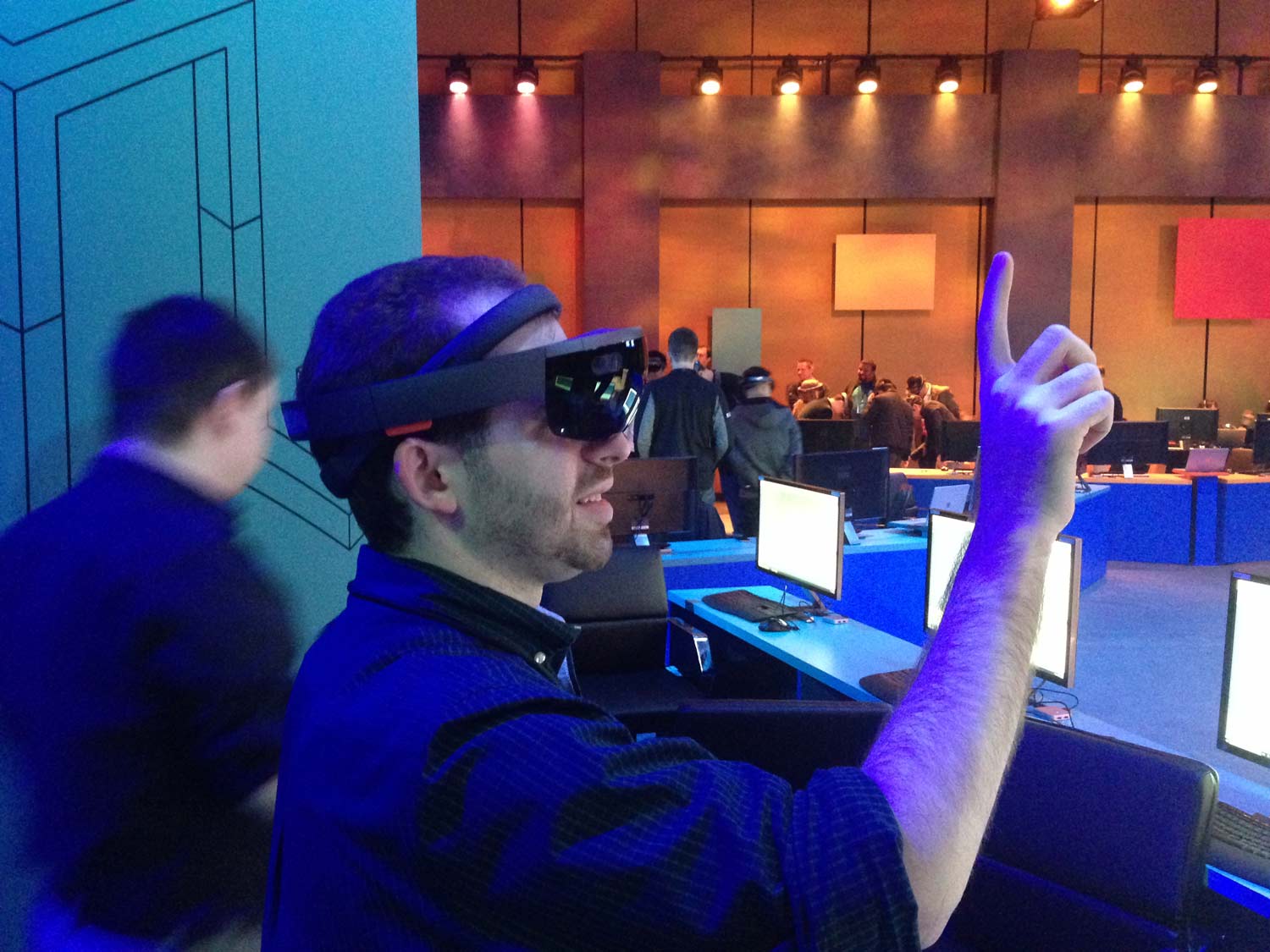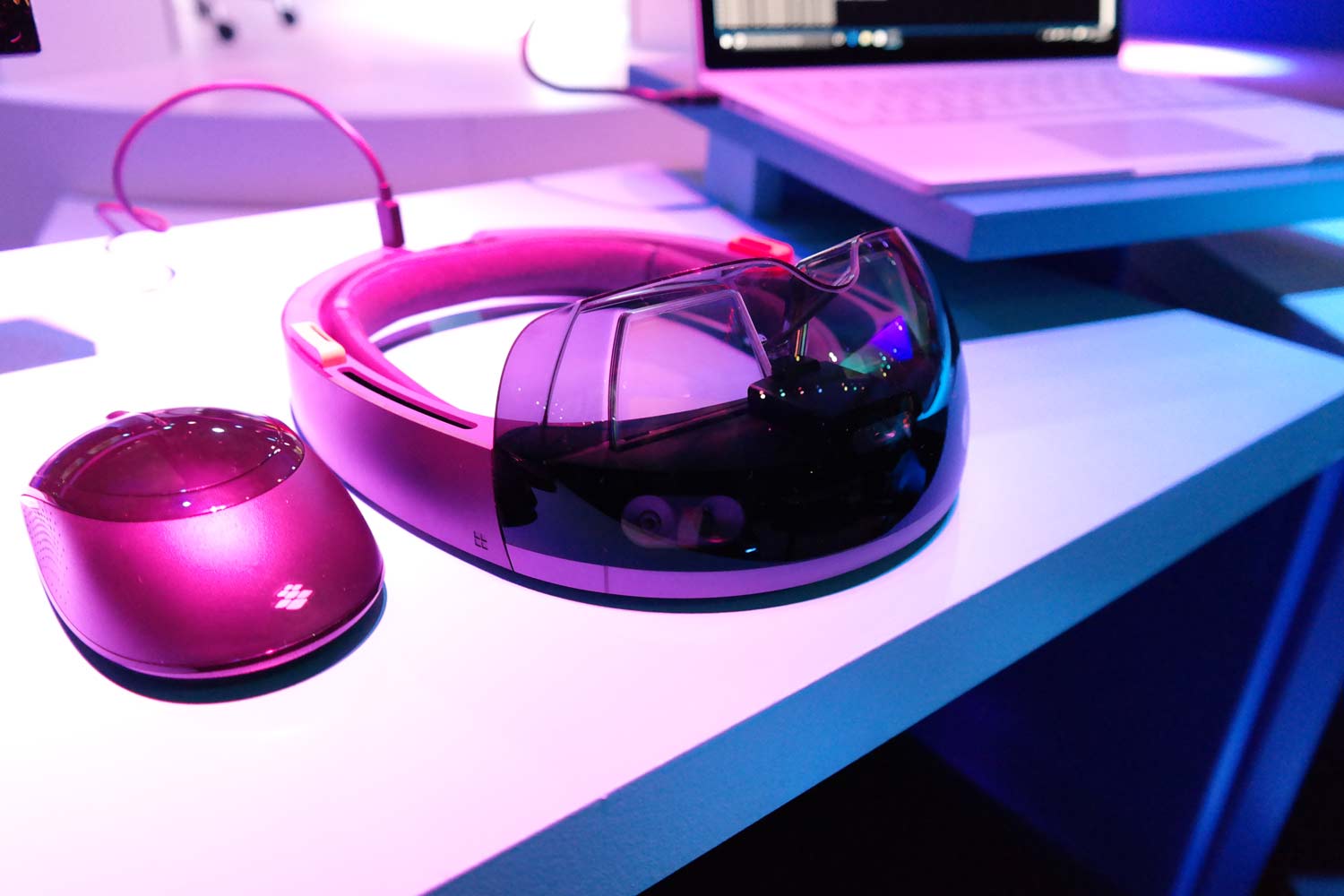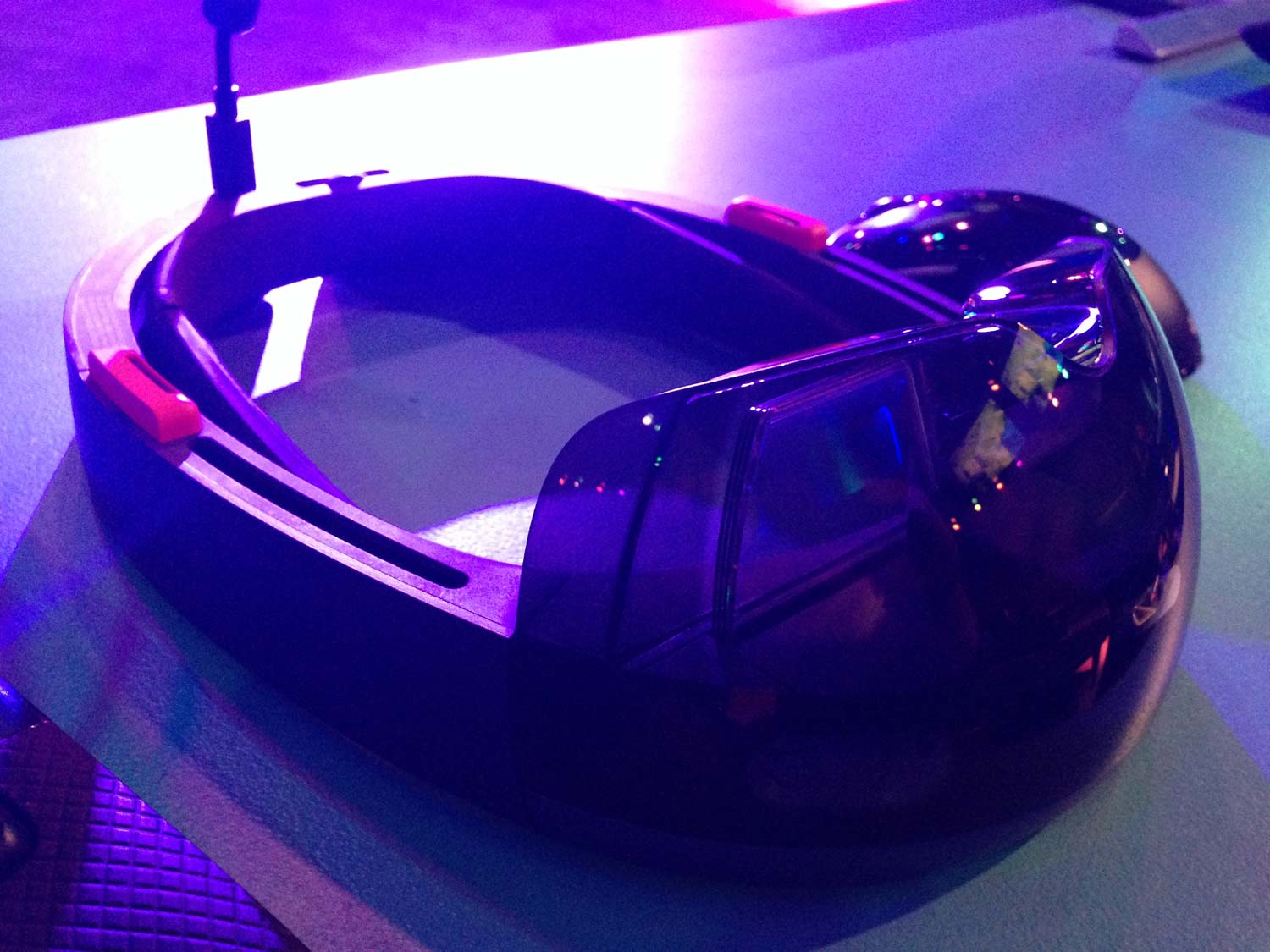HoloLens Hands-on: A Big Step Forward
The HoloLens goes beyond virutal reality headsets with shared experiences that take holographic computing to the next level.
SAN FRANCISCO — A year and a half of hype and lots of behind-the-scenes development work have lead to this: six people wearing augmented-reality headsets, flinging energy balls at the robotic creatures floating over each others’ heads. And it was awesome.
This bit of augmented-reality fun came courtesy of Microsoft's HoloLens, which is getting a big showcase at the company's annual Build conference . Microsoft has started shipping its AR headset to developers who've ponied up $3,000 for the device so that they can start developing apps for it.
Microsoft is giving developers and the press a taste of what it's like to use the shipping version of HoloLens, and what we're seeing is a big step forward from earlier iterations of the device — especially in terms of shared experiences.
I spent an hour with the developer edition of the HoloLens on the first night of Build, the first time I ever tried on Microsoft's headset. After a day filled with talk of Windows, Cortana and bots, I found HoloLens to hold more potential than anything else at the conference.
Sharing the HoloLens Experience
While cool, last year's Microsoft Build demo was a fairly solitary experience. This time around, Microsoft showed us how to create virtual objects that could be viewed by multiple people donning headsets. And we could watch each other interacting with these virtual objects.

In the 1-hour, stripped-down version of what actual developers are seeing at Build, I got to build and deploy an incrementally improved app through Unity and Visual Studio. (With a lot of hand-holding from my mentor, of course, and a bunch of prebuilt scripts.) What was more fun, though, was seeing — literally — the fruits of my labor.
Initially, we simply placed a beacon somewhere in the demo room and walked around it to experience its spatial audio. But soon, we added winged robot partners called Pollys that floated above our shoulders. We could see the Pollys hovering over other HoloLens users' shoulders, and they could see the ones floating above ours. Additional demos added spacial recognition that let us move our virtual beacon and physics that allowed us to toss objects through the air.
That physics demo was particularly eye-opening. With the flick of a finger, I could fling a ball across the demo room, watching it grow smaller as it traveled further away. Aim the ball at one of my colleague's Pollys, and I could knock it out, a halo of cartoon stars circling above its head to complete the effect. This wasn't the solitary augmented reality my colleagues had experienced, but one in which anyone wearing a headset could interact with holograms.
The demo ended as we used HoloLens's air-tap gesture — make a fist and flick your index finger — to bombard our virtual beacon with balls. That caused the beacon to explode — virtually, of course — opening up a new dimension where our Pollys could fly home. (Though we quickly discovered we could continue to pelt the Pollys with virtual balls, even as they sought safety in their new home.)
When I took off the HoloLens for the last time, I missed my Polly, and AR, already.
What's New with HoloLens Hardware

It may have been my first time using HoloLens, but Microsoft has shown off its headset before. At last year's Build, Microsoft let reporters try on an early prototype of the device. My Tom's Guide colleague Philip Michaels, who was at both last year's demo and this year's unveiling, says the hardware hasn't changed that much, though the outer plastic ring that makes up the headset is a little bit more flexible. Last year, Microsoft warned people not to pull on the ring; on the developer edition, HoloLens can better withstand any tugging as you adjust the headset.
The rest of the HoloLens setup remains the same. Inside that outer ring, there's an adjustable inner band that fastens the HoloLens to your head. The outer band holds everything the device needs for computing, the cameras and, of course, the lenses.
I wouldn't call wearing a HoloLens comfortable. But after multiple minutes fitting it to my admittedly large noggin, I got used to taking the headset on and off quickly, even if I always remembered that it was there. (Our demo included both using the HoloLens and building AR objects using Unity and Visual Studio, so quickly putting on the headset became something of a habit.) You look like a Power Ranger when you're wearing a HoloLens, but unlike the late, unlamented Google Glass, this headset isn't something you'd wear when you're out and about.

Based on what I've heard from testers, one thing that hasn't changed with the HoloLens is the device's limited field of view. Only a small rectangular portion of the lens displays holograms, and I often found that I needed to move my head slightly up or down to get myself perfectly aligned to get a full view of an object.
Our demo involved us walking toward virtual objects to interact with them — HoloLens uses spatial sound, so audio gets louder as you get closer to an object — but the closer you got, the more likely parts of the object would be cut off from your field of view.
Some of this was remedied when Richard, my Microsoft-issued “mentor,” suggested that I wear the HoloLens higher on my head. I suspect that more practice and a precise fit might help, but it was a pain during the demo.
What You'll Use HoloLens For
After trying HoloLens, I started thinking about could be done with the device. Microsoft has been keen on showing off potential academic uses, including at Wednesday's Build keynote, when students from the medical school at Case Western University examined a virtual brain. Other uses touted by Microsoft include a version of Skype for HoloLens and a NASA-built app that gives you a rover's eye view of Mars.
Prior to Build, Microsoft posted a demo video on YouTube that shows off a technology it's dubbed "holoportation," in which you can have conversations with someone like they're standing right next to you in the room. It's another example of how Microsoft is pushing HoloLens away from being just a solitary experience toward one in which you're interacting with other people.
Uses in science, architecture, public planning, fashion, design and anything else that requires 3D models spring to mind, as HoloLens could produce images cheaply and easily with the right apps. And after spending time bopping Pollys out of the sky and pulling beacons away from others, there’s room to rediscover play with new games: I could easily imagine the next version of laser tag being on HoloLens. Ultimately, Microsoft's headset could help you visit new places, meet new people, pick your next outfit or redecorate your apartment, all without leaving your home.
With HoloLens now shipping to developers, the tech is usable and stable. The device still looks a little clunky to my eyes and the field of view isn’t as complete as advertised, but it’s time to fill out the experience with apps so that the world can see what HoloLens is capable of. With HoloLens now in developers' hands, I can't wait to see what practical uses they come up with.
Senior Editor Philip Michaels contributed to this report.
Sign up to get the BEST of Tom's Guide direct to your inbox.
Get instant access to breaking news, the hottest reviews, great deals and helpful tips.
Andrew E. Freedman is an editor at Tom's Hardware focusing on laptops, desktops and gaming as well as keeping up with the latest news. He holds a M.S. in Journalism (Digital Media) from Columbia University. A lover of all things gaming and tech, his previous work has shown up in Kotaku, PCMag, Complex, Tom's Guide and Laptop Mag among others.

